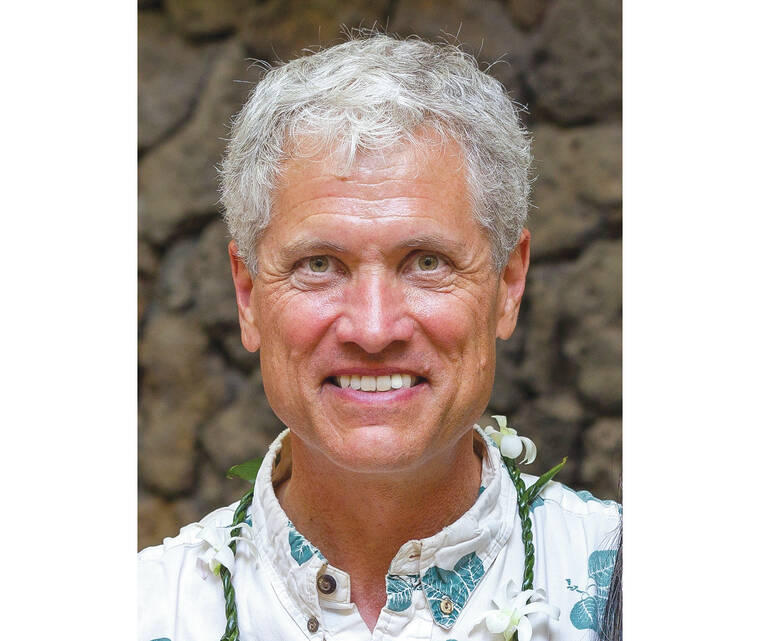A measure introduced in the state Legislature aimed at protecting endangered animals from new development is 25 years in the making, said a Big Island legislator.
House Bill 1979, introduced Wednesday, would require developers whose projects could inadvertently kill or harm a threatened or endangered species to prepare a Habitat Conservation Plan with the Department of Land and Natural Resources beforehand, and would enact penalties for failing to do so.
Habitat Conservation Plans enumerate how an entity expects to accidentally kill endangered species, what legal activities the entity will be doing that will cause the accidental kills, and what steps the entity will take to mitigate the effects of those activities. Such a plan is required to receive an Incidental Take License from the DLNR.
“Many developers already do this, but now they would be mandated to do it,” said Kohala Rep. David Tarnas, who co-introduced the bill.
Tarnas said he has been working on similar bills for 25 years, and that the problem HB 1979 is addressing has gotten worse in that time.
Tarnas said the bill is intended to target organizations and businesses, rather than individuals. Although fishermen can potentially inadvertently take endangered fish, Tarnas said the likelihood of harm is far greater from developments such as wind farms, construction sites and golf courses.
Rae Okawa, development coordinator for the Hawaii Wildlife Center in Kapaau, said in an email to the Tribune-Herald that endangered birds and bats are often brought to the center for treatment from injuries caused by inadvertent man-made factors such as urban lighting, building strikes, fishing line entanglement and more.
A proposed wind farm in Kahuku on Oahu has been the subject of controversy for years, particularly after its 2016 Habitat Conservation Plan estimated that it would inadvertently kill about 85 endangered Hawaiian hoary bats over the course of 21 years.
Tarnas said the requirement for a Habitat Conservation Plan would also impact sites that feature bright lights that can confuse or disorient birds, sometimes to a fatal extent.
This was a concern during a 2021 television production in Ninole, when floodlights aimed at the ocean were suspected of disrupting the behaviors of endangered seabirds.
“Bright lights can cause a phenomena called ‘seabird fallout,’” Okawa wrote. “Each year young seabirds … fledge from their nest for the first time. The species evolved to fledge at night and use moonlight to navigate their way out to sea, but with the arrival of humans and artificial lighting that natural phenomenon has been interrupted. The young birds can become confused by lights from airports, street lamps, buildings, and homes. In their confusion they will circle to the point of exhaustion or sometimes collide with these lighted structures.”
“A lot of these things can be avoided very easily, but so many people just aren’t aware of the issue,” Tarnas said.
Okawa wrote in her email that the Hawaii Wildlife Center treated 14 endangered nene that were injured on golf courses in 2021, many of which required long-term care. In addition, one of the center’s first patients in 2022 was a nene believed to be struck by a golf ball.
“Because golf courses have nice lawns and lots of water features, they can be a favorite spot for waterbirds and occasionally some shorebirds and seabirds, too, depending on the location,” Okawa wrote.
Golf courses are not liable for such incidents, Tarnas said, but HB 1979 would at least require new courses to factor those incidents into their construction plans.
The bill also increases the requirements for Habitat Conservation Plans, including a clause mandating developers to have a service agreement with a facility that can provide on-call emergency medical treatment and rehabilitation for any species injured by the development. According to the DLNR, Habitat Conservation Plans have a minimum development time of one year. HB 1979 is one of only a handful of bills this session targeting endangered species.
Other bills include HB 1422, which would allow the DLNR to issue temporary permits for otherwise prohibited acts if the animal species involved is designated as “threatened” rather than “endangered”; and Senate Bill 3275, which would make it a crime to transport illegally harvested endangered marine species via state-owned roads.
Email Michael Brestovansky at mbrestovansky@hawaiitribune-herald.com.

